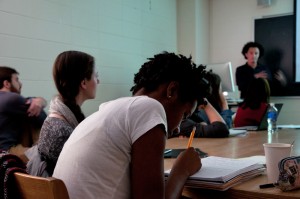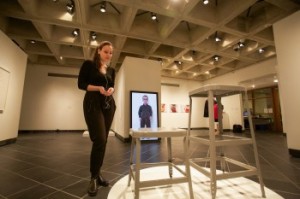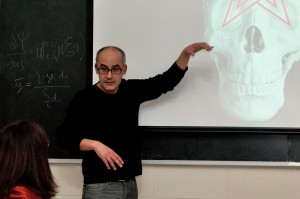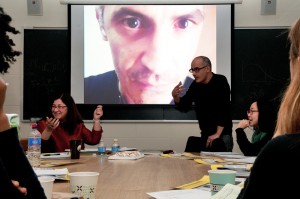Several weeks ago, students in Professor Carol Solomon’s Curatorial Praxis class were assigned an artist whose work will be featured in the upcoming exhibition Memory || Place || Desire. The students have spent most of the month of April researching the artists and drafting text to accompany their pictured works in the exhibition’s catalogue. By the end of the last class on Wednesday, each student will also have given a short presentation to the class outlining his/her artist’s background and style.

The presentations and drafting process provide extra insight into each artist’s inspirations and how they have been influenced by the Maghreb. Nick Schoen, one of the students in Professor Solomon’s class, has been researching Mustapha Akrim, an artist that visited Haverford a few weeks ago through the Mellon Creative Residencies Program. “Focusing on Mustapha has made me realize that he’s really not just an artist, and a lot of the other artists that will be featured in Memory || Place || Desire aren’t either,” says Nick. “Mustapha is a visionary. He is trying to change Morocco for the better through his art, and I have a much better appreciation for him and his goals after meeting and reading about him.”
In addition to the presentations and catalogue entries, the class has also been putting together short recordings on their artists to help create the exhibition’s audio tour. Mike Ferrara, the student that is spearheading this project, thought it would be interesting to have the students talk casually about their artist for the recordings, rather than just read the text that will be featured in the catalogue. The recordings are nearly completed.
The class as a whole has spent some time debating the layout, fonts, and cover of the exhibition’s catalogue in the past couple weeks. A group of students has also been brainstorming the installation design of the exhibition itself in the Cantor Fitzgerald Gallery.






